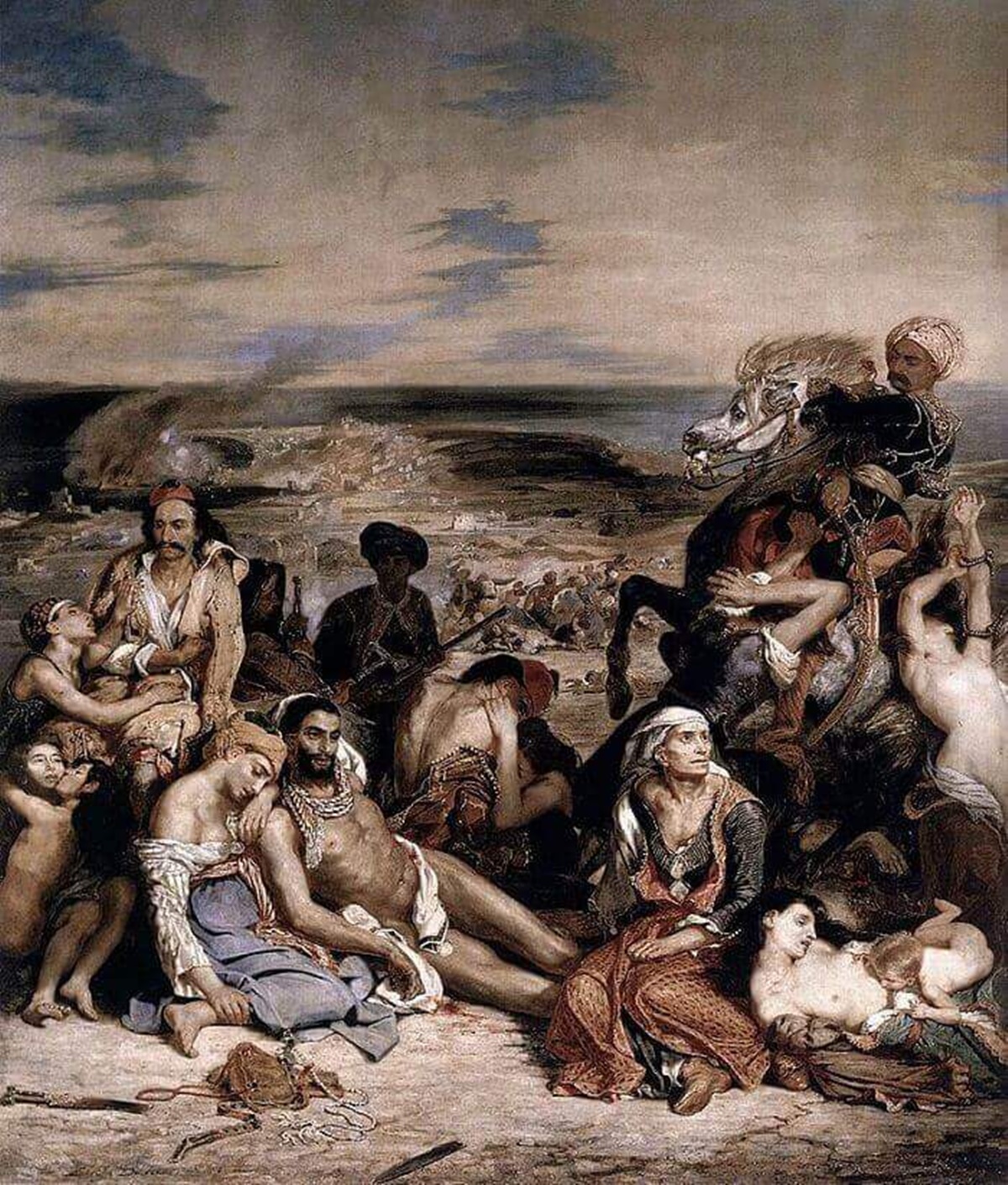📣 For more lifestyle news, click here to join our WhatsApp Channel and also follow us on Instagram
Behind the Art: How Eugène Delacroix’s ‘The Massacre at Chios’ stands as a heartrending reminder of injustice and human strength
Behind the Art: In April 1822, as the devastating tragedy unfolded on the serene island of Chios, the fifth-largest Greek island, one man dared to immortalise the unspeakable tragedy on canvas. The renowned French painter, Eugene Delacroix, created "The Massacre of Chios," capturing the heart-wrenching scenes with remarkable skill. What makes this painting such an important historical piece of art?
 Just like several artworks, upon its initial exhibition, "The Massacre of Chios" by Eugène Delacroix elicited mixed reactions from critics. (Source: Eugène Delacroix's website)
Just like several artworks, upon its initial exhibition, "The Massacre of Chios" by Eugène Delacroix elicited mixed reactions from critics. (Source: Eugène Delacroix's website)In April 1822, a devastating tragedy unfolded on the serene island of Chios, the fifth-largest Greek island. The Ottoman Empire, seeking revenge for the islanders’ support of the Greek Revolution, unleashed a merciless assault on the unsuspecting inhabitants. With the arrival of the Turkish fleet, Chios was plunged into a nightmarish ordeal that would haunt its people for generations to come. The island became a battleground of horror and despair for two agonising weeks. Mass killings, torture, rape, and rampant destruction engulfed the once-tranquil land. News of the gruesome massacre echoed throughout Europe, sending shockwaves of outrage and grief. Artists and writers, moved by the magnitude of the tragedy, poured their hearts onto canvas and paper, eternalising the horrors of Chios. Victor Hugo, the celebrated poet, penned a mournful poem that echoed the world’s sorrow. Amidst the darkness, one man dared to immortalise the unspeakable tragedy on canvas. The renowned French painter, Eugene Delacroix, created “The Massacre of Chios,” capturing the heart-wrenching scenes with remarkable skill. What makes this painting such an important historical piece of art?
Chios Massacre and the Painting
The Massacre of Chios stands as a blood-stained chapter in the history of modern Greece, a testament to the brutalities inflicted during the struggle for independence from the Ottoman Empire. In March 1822, a group of revolutionaries led by Lykourgos Logothetis arrived from Samos Island and began attracting more Chians to the cause. News of this reached the Sultan, who grew furious upon hearing rumours of a conspiracy against his empire. In his anger, he turned against Chios. In April 1822, the Sultan dispatched a Turkish fleet to destroy Chios and annihilate its people. On Holy Friday, April 13th, 1822, the fleet landed on the island, unleashing a relentless onslaught of killing, rape, and plunder. According to several historical documents, The Massacre of Chios claimed the lives of approximately 90,000 people, predominantly Greeks, while 50,000 were enslaved, and a further 25,000 were exiled. Amidst this devastation, only 2,000 inhabitants survived, either by seeking refuge in caves or escaping the island by sea. Chios lay in ruins, a haunting indication of the horrors endured.
The Massacre of Chios remains etched in the collective memory, an indelible scar on Greece’s past. It serves as a solemn reminder of the resilience of the human spirit, the brutality of war, and the enduring fight for freedom. Delacroix’s “The Massacre at Chios” is a visual testament to the shocking atrocities committed by the Ottoman Empire on the island of Chios. Delacroix’s artwork takes viewers on a journey into the heart of this tragic event, offering a haunting and emotionally charged depiction of the sufferings endured by the Chians.
The Artist and His Vision
 Delacroix’s skilful portrayal of human emotion adds an additional layer of depth to the painting. (Source: Eugène Delacroix’s website)
Delacroix’s skilful portrayal of human emotion adds an additional layer of depth to the painting. (Source: Eugène Delacroix’s website)
At the centre of the painting, Delacroix presents a scene of immense chaos and despair. Through his masterful use of composition, colour, and light, he creates a powerful narrative that unfolds before our eyes. We witness the anguish of the victims, the brutality of the oppressors, and the shattered landscape that bears witness to the horrors inflicted upon the people of Chios. The painting’s large scale and intricate details immerse viewers in the harrowing reality of the massacre.
Delacroix’s skilful portrayal of human emotion adds an additional layer of depth to the painting. The anguished expressions, contorted bodies, and desperate gestures of the figures evoke a profound sense of empathy and sorrow. Symbolism also plays a significant role in the artwork, with Delacroix incorporating elements such as the Greek flag, broken columns, and crumbling ruins, all serving as potent symbols of the island’s struggle for liberation and the devastating consequences of war. “The Massacre at Chios” showcases Delacroix’s unique artistic style. By combining elements of Romanticism and historical painting, Delacroix crafted a visually striking and emotionally charged composition that resonated with audiences of his time and continues to captivate viewers to this day.
Critical Reactions and Historical Accuracy Debate
Just like several artworks, upon its initial exhibition, “The Massacre of Chios” by Eugène Delacroix elicited mixed reactions from critics. While some accused Delacroix of presenting the brutal occupiers in a sympathetic light, others hailed the painting as a prime example of the passionate and intense nature of modern art. Jean-Auguste-Dominique Ingres, a French Neoclassical painter, famously remarked that the artwork embodied the “fever and epilepsy” of the artistic movement. However, some critics vehemently condemned the piece, dubbing it “the massacre of painting.” The traditionalists of the art academy preferred the depiction of stoic, heroic figures battling against the Ottoman Empire, adhering to conventional narratives. However, Delacroix chose a different path, portraying the suffering endured by the people under the oppressors. This departure from the expected stirred controversy. Surprisingly, the newly appointed art administrator for the Bourbon royal family, Comte de Forbin, purchased the painting without seeking prior permission. Although this action was met with disapproval, the royal family decided not to challenge Forbin’s decision, allowing the artwork to remain in their possession. Eventually, in 1874, the painting found its permanent home in The Louvre, where it is still exhibited today, continuing to captivate viewers with its powerful portrayal of human suffering and resistance.
Next up in Behind the Art: How James Peale Captures George Washington’s Triumph at Princeton
📣 For more lifestyle news, follow us on Instagram | Twitter | Facebook and don’t miss out on the latest updates!
📣 For more lifestyle news, click here to join our WhatsApp Channel and also follow us on Instagram



- 01
- 02
- 03
- 04
- 05

























